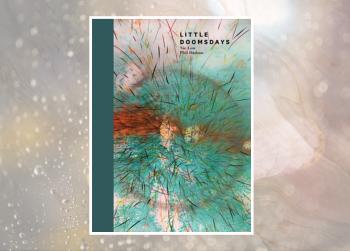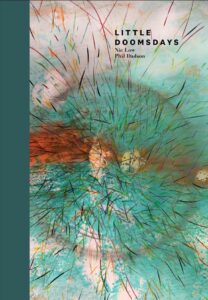
Little Doomsdays is a lavishly illustrated collaborative art book between musician/painter Phil Dadson and writer Nic Low. It’s the fifth in the ‘kōrero series’ of books, conceived and edited by Lloyd Jones.
In Little Doomsdays, legendary musician and painter Phil Dadson responds to a wildly innovative text by Ngāi Tahu writer Nic Low that’s steeped in te ao Māori. Together they play with the notion of ark and arc in a manner that is at once beguiling and challenging.
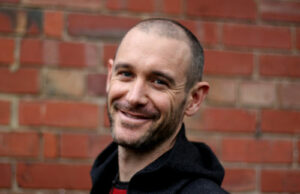
Nic Low (Ngāi Tahu) is the partnerships editor at NZ Geographic magazine and the former programme director of WORD Christchurch. A prize-winning author of short fiction, essays and criticism, his writing on wilderness, technology and race has been widely published and anthologised on both sides of the Tasman.
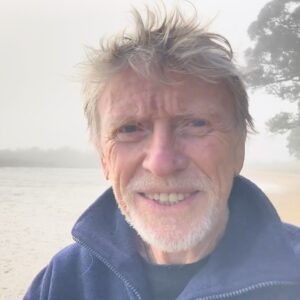
Phil Dadson ONZM is a transdisciplinary artist, musician/composer and improviser, whose practice spans some 50 years. He is the founder of the acclaimed music/performance group From Scratch. He was a lecturer in Intermedia at the Elam School of Fine Arts from 1977 to 2001, when he left to take up full-time art practice. He is represented by Trish Clark Gallery.
To celebrate the launch of the work, we approached Phil Dadson and Nic Low about the possibility of a written interview about the book, to which they very graciously agreed. We are absolutely thrilled to announce that you can now read our interview with Nic and Phil below along with some samples of the stunning artwork used in the book.
We wish to extend our heartfelt thanks to both Phil Dadson and Nic Low for their time and for such a fabulous interview.
All images of the artwork used in this interview are © Phil Dadson (All rights reserved) and used with the kind permission of the artist.
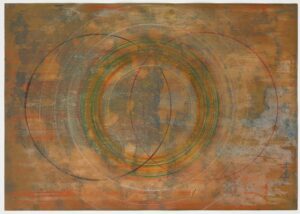
These ‘kōrero series’ projects all begin with an approach from series editor Lloyd Jones and his suggestion of a concept on which each of you could build. What was your first reaction when he got in touch?
NL: I was intrigued. At the time I was deep in the organising of the WORD Festival, and promoting my last book, Uprising, which took me seven years and quite a lot of slog to write. The prospect of something short, collaborative and experimental appealed.
PD: The first pairing suggested by Lloyd fell over unfortunately — for various reasons — and sometime later Lloyd suggested the collaboration with Nic. Quite frankly I knew nothing about Nic’s work at the outset, and given the previous experience entered into the collaboration with a slight sense of reserve. This was rapidly dissolved, however, as we established connection and a bond of empathy.
Phil, you are in Auckland, and Nic, you are in Christchurch. Did you know each other before you embarked on this?
NL: No. I knew of Phil, though, because my dad is a musician who’s also into free and experimental music, so I’d been exposed to Phil’s work in his seminal group From Scratch.
PD: See above!
How did you decide on your working process?
NL: We didn’t agree any particular formal structure — it was more a game of hide and seek as we worked through the unpredictability of COVID and around various other projects, swapping images or ideas, sending through drafts, chatting on the phone. Phil initially did some beautiful images riffing on the idea of the arc; we had long conversations about these, and toyed with several different approaches, but ultimately the thing just unfolded. We did agree early that he wouldn’t be illustrating my writing, and I wouldn’t be writing a direct response to his work. We’d allow them to sit alongside each other, and let readers draw their own conclusions.
PD: Because of very different timelines and obligations we evolved the relationship reasonably independently at the outset, but more in tandem as the process evolved.
Did it come together relatively easily or were there some false starts?
PD: From my perspective it came together relatively easily. I launched into a series interpreting the initial brief fairly laterally and tangentially.
Writing and painting are not normally collaborative processes. Did this partnership between you present challenges or was it perhaps energising?
NL: It was super hard for me because other than my partner I don’t usually show anyone my work until at least a second draft. For a good while I wrote into an online document so Phil could potentially riff off it, and Lloyd could have input, but the net effect was I just felt horribly exposed. In the end I worked offline and waited till things were more fully formed before sending it through.
PD: Much of what I did initially, I did independently, with reference to a sketchy scenario Nic and I discussed by phone, and while I had the time to do it. The results were shared with Nic and during his later development of the text I devised and assembled further work that was more directly responsive to Nic’s writing.
How did it stretch you?
NL: Because Phil works in much more abstract and poetic ways than I do — I am often a materialist, and can be quite literal, verging on didactic, if not careful! — it was good to be challenged to open my writing out, use fragments and associations, and to incorporate ideas that were not my own. I interviewed Phil a couple of times at length to try to understand his philosophical and spiritual beliefs around what is worth preserving about the past, then used this to structure the piece, and introduce new strands and themes. The final scene, for example, has its roots in a vision of Phil’s. I also wrote a lot of this during some very stressful times — COVID, two intense jobs (programming an arts festival during a pandemic while also working as a magazine editor and writer and raising a toddler in a new country and city, having recently moved back after nearly 20 years overseas) — so the fact I was so stretched shows in the text as well. It’s a little grim at times!
PD: For me it definitely inspired directions I would not have otherwise followed.
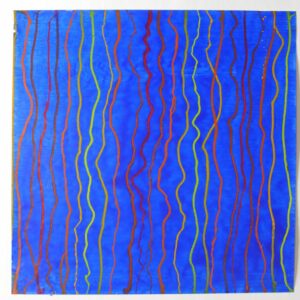
What’s one new thing your learnt about each other’s work along the way?
NL: I learned that Phil builds creative structures into his life, like producing a drawing a day for the entire month of . . . February? . . . and this inspired the hell out of me. I write a lot, but not always on things I want to be working on. Setting formal frameworks or constraints like Phil does has seen me setting aside specific time for my next book over the coming year.
PD: The imaginative depth and lyricism of Nic’s writing. I love his inventive and playful take on the ark topic that we began with. It resonated well with my approach and has, I feel, resulted in a dynamic synergy of text and images.
Can you tell us about the title?
NL: The working title was Ark of Arks, which was to be a selection of arks and time capsules throughout history. This guided the creation process for me, and for Phil thinking about arcs, both visually, and narratively; once the draft was done, we decided it’d served its purpose, and cast around for something else. Little Doomsdays is a phrase from the text and talks about the fact that things are ending and disappearing every day — extinctions, memories, values — and that these tiny catastrophes are one of the engines of creativity: how we try to rescue such things from the passage of time.
PD: The title is one of several taken direct from Nic’s text. It was not my choice, nor one I was particularly comfortable with, but it has stuck. The world is full of little doomsdays, and the book I hope transcends the doom with light.
As you just mentioned the original title was going to be Ark of Arks, can you talk to us about arks and arcs?
NL: My initial impulse was to think about what our society values today, and what we might therefore put in a modern ark. I’ve always been interested in big data and what it tells us about our values, so I went to Google for the twelve most popular search queries of the year, thinking I might write a piece about each. I expected it would be an archive of what the world considers most important—either the things we want to preserve, or the things we most fear—but it felt more like an archive of the world distracting itself from both of those things. The top search terms were almost all related to cricket, with one outlier being about the new iPhone.
Abandoning that idea, we started riffing on different types of arks, their histories and significance, which, in a way, was a process of collecting other people’s arks. So, the concept of an ‘ark of arks’ was born out of that, and with it the fictional framework of a group devoted to collecting other people’s arks when faced with their own imminent demise.
I believe that there is no such thing as abstract art that everything is intentional conscious, or unconscious. Would you agree and you tell us about how subconscious influences affect this book!?
NL: The idea of creating a book of fragments reflects the origins of the story of Noah’s Ark, which comes from the 5,000-year-old Epic of Gilgamesh. That tale was deciphered from fragments of clay tablets, so I wanted to give this book a similar fragmentary nature – like a collection of tablets unearthed at some future date. When you work with fragments, the unconscious works hard to find meaning and connection between seemingly disparate ideas. Likewise with Phil’s enigmatic, beautiful images that the text bounces off and complicates in unpredictable ways. I hope readers will find resonances beyond anything we could have deliberately inserted.
Do you have any specific hopes for what people will get from looking at Little Doomsdays do you want people to bring that to the book from inside themselves when looking at them? Does the art or the text act as a sort of trigger or way in?
NL: For me a key idea in the book is exploring what happens when we go beyond denial and mitigation and arrive at open fear. When we finally acknowledge that the house is on fire, what do we grab on the way out? Thought it’s far from a polemic, and is full of weird and playful ambiguities, I hope that it might make people a little bit afraid, and sad, and make them think about what we truly wish to protect.
Our final question is now that the book is printed, are you pleased with it?
NL: I think so, but it’s impossible to say! At this point in the process for my last two books I never wanted to see or think about them ever again; the fact I’m excited to see the finished product here suggests we’ve done something right.
PD: I’m pleased mostly with the way our collaboration evolved. I hope to be pleased with the book when I get to see it and hold it in my hands. A special relationship has developed. Between words and images and between Nic and me. I’m grateful for this and for the invitation that set things in motion.
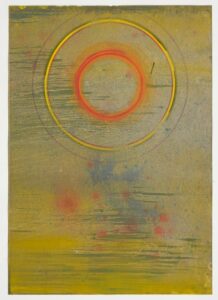
You can borrow Little Doomsdays from the library by clicking the link below:
Little Doomsdays / Low, Nic
“The fifth in the ground-breaking korero series conceived and edited by Lloyd Jones, Little Doomsdays is another rich collaboration between an artist and a writer. This time legendary musician and painter Phil Dadson responds to a wildly innovative text that’s steeped in te ao Maori by Ngai Tahu writer Nic Low. Together they play with the notion of ark and arc in a manner that is at once beguiling and challenging.” (Catalogue)


